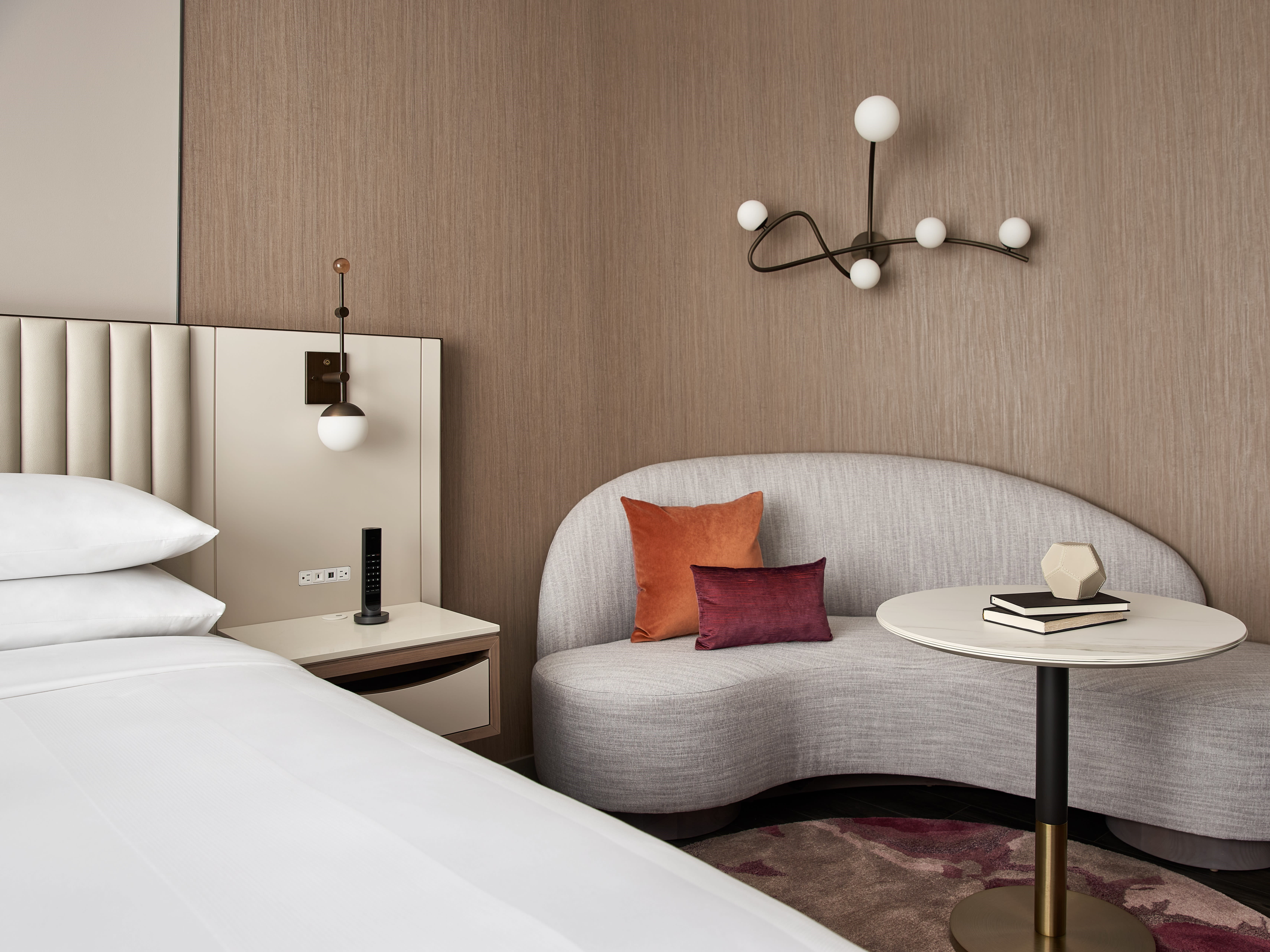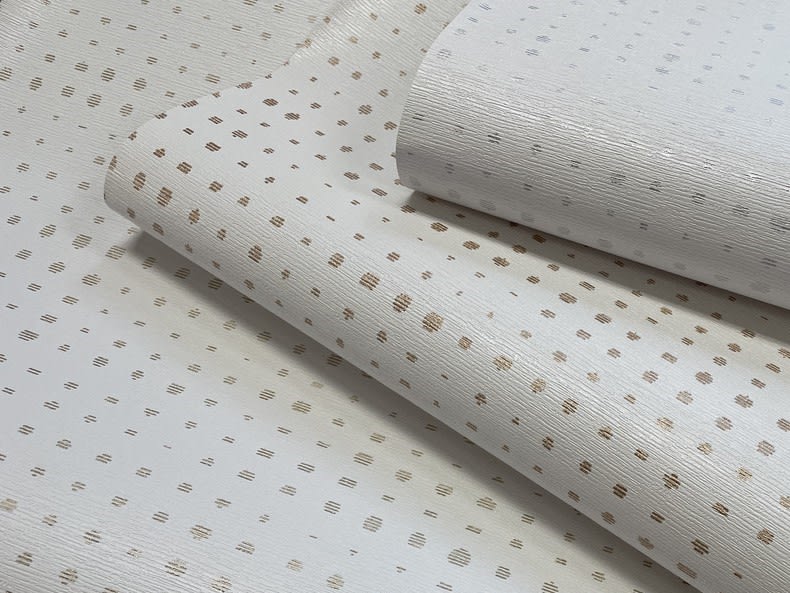Creating Space
Small Hotel Room Design Is on the Rise

In a world brimming with complexity and overstimulation, the hospitality industry is finally scaling back—and elevating design—room by room, one square inch at a time.
Embracing a ‘less is more’ philosophy for 2024, hospitality executives, the A&D community, and travelers are equally on board for minimized guest accommodations (coined as ‘micro hotel rooms’). By streamlining to essential amenities and physical space, small hotel room design ironically offers more room and inspiration for guests to explore the city itself (rather than stay in). For today’s millennial and Gen Z crowds, these micro hotel rooms are not confining, but rather, redefining the intention of their getaway experience, be it for business or pleasure.
Petite Suites from the '70s to Today: The Micro Hotel Revolution
Space-saving and savvy, the micro hotel is a seed of an idea that originally stemmed from Japan's compact capsule hotels (also called pod hotels or pods) built in the 1970s. Small yet functional at approximately 6.5 feet long and 4 feet wide (about the size of a full bed), these pods catered to solo travelers seeking a basic overnight stay. Groundbreaking for the hospitality industry, this hotel pod phenomenon later evolved into the "micro hotel," coined in 2007 by hoteliers Ira Drukier and Richard Born with their Pod 39 in New York.
Emphasizing minimalism, micro hotels of today offer rooms significantly smaller than the typical 330 square-foot hotel room, ranging from a tiny bunker-like 91 square feet to half the size of a classic hotel room at 141 square feet. Affordable and efficient, this shift towards smaller rooms was designed to encourage guests to get outside their rooms and explore their destination, be it New York, London, Tokyo, and any cultural hot spot or small city in between.
Like a cozy studio or travel trailer, modern micro hotel rooms prioritize efficient, purposeful design. Layout plans typically feature multifunctional furniture and tech-advanced amentities, fostering a seamless, orderly environment. Yet far from feeling cold or sterile, these quaint guestrooms deliberately strip away excess and overwhelm so travelers can embrace a sense of clarity and JOMO (joy of missing out).
Outside the calm room walls, the hotel's communal spaces, like bustling restaurants, bars, and creative co-working spaces, provide a lively and energetic contrast. This yin/yang balance between the private small guestrooms and the dynamic public areas aligns with current wellness and "bleisure" trends in hospitality.

The Art of Illusion: Living Large in Small Space Design
When it comes to first impressions, certain interior design features make a difference, especially in small spaces.
When decorating a micro hotel room, designers may want to use a refreshingly cool and light palette of greens, blues, purples, or neutrals like misty grey, crisp white, and more, which naturally make tight or narrow areas look—and feel—wider and longer.


Mirrored or metallic fabrics also play with light, creating the illusion of depth and more expansive space. Textiles like shimmery half-circle Lustrous II or the metallic dotted Sweet Spot (above) add pretty, polished glamour to compact hotel rooms—especially when reflections of disco ball-like sparkles glisten and dance around the room as light hits its surface.

At first glance, some patterns could seem too busy in a small hotel room; however, those with lines or linear motifs bring compact hotel rooms to new heights (and widths). Timeless vertical-striped wallcovering patterns like Amari Stripe (left), Conundrum Stripe, Irving Stripe, or the radiant raffia-like textured Lustre Strie make low ceilings look higher. For narrow spaces, horizontal stripe wallcoverings like Loire visually widen and stretch a space.
Windows in small hotel rooms also create a natural optical illusion, acting as a frame to the outside world and inviting sunlight or city lights in, simulating an outdoor space. Designers can amplify this effect with a combination of sheers for natural light and mounted blackout curtains for a private and peaceful night of sleep.
No matter the size, style, or location, most micro hotel spaces make room for strategic, sophisticated design elements that ensure small rooms feel inviting, comfortable, and expansive (and never claustrophobic or confining).
Elevated Havens: Micro Rooms That Make an Avant-Garde Statement
Large, sprawling suites are no longer the end-all, be-all for modern hospitality. With micro hotel rooms, it’s all about the details—like stylized or designer-exclusive décor, finishes, features, bedding, and beyond that range from high-end to urban-eclectic. Color, pattern, and texture all play a pivotal role, whether displayed on furnishings, décor accents, or full walls. In essence, sophistication can be small yet mighty, subtle or power-packed.
For a serene scene, one-of-a-kind digital wallcoverings like Matsu would be a breathtaking biophilic choice for a single wall backdrop. Textile choices such as Waterfall or Swirlscape, both crafted in chenille, blend fluidity and texture with nature-inspired tones of stone, water, mineral, and wood. These organic and visually striking fabrics are ideal for adding neutral yet eye-catching accents to walls, headboards, ottomans, or pillows.

While advisable to use a neutral or cool palette in compact spaces, hospitality designers can still have fun with creative and bold textiles. A mix of warm colors, linear designs, and luxurious textures from large yarns to boucle wools can turn a small hotel room into a sumptuous, personalized staycation.
Merging high-end fashion with practicality, small hotel room design trend is set to make a big impact on the hospitality industry in 2024. These micro rooms, embracing both luxury and simplicity, offer travelers a serene retreat without sacrificing the excitement of the city just outside. For more trends and the latest in textile and wallcovering designs, visit us at one of our showrooms or delve into our online offerings at https://momentumtextilesandwalls.com.
Carousel
-
01
High Design
Elevate compact areas with on-trend textiles that boast elongating vertical patterns. -
02
Airy Hues
Cool blues, greens, and lavenders infuse quaint rooms with a fresh, spacious feel. -
03
Divine Shine
Create the illusion of more space and depth with metallic or reflective accents. -
04
Natural Light
Daytime transparent treatments and p.m. blackout shades offer vast views (and Zzz's).
Sources
Ian Fulgar. "Micro-Hotels: On Operating and Thinking Small." https://www.ianfulgar.com/project-ideas/micro-hotels-on-operating-and-thinking-small
Travel Awaits. "What is a Micro-Hotel?" https://www.travelawaits.com/2484426/what-is-a-micro-hotel/
HRC International. "What is a Microtel? Discovering the World of Micro-Hotels." https://www.hrc-international.com/blogs/3/nehphz-what-is-a-microtel-discovering-the-world-of-micro-hotels
Hospitality Net. "Micro-Hotels: The New Trend in Hospitality." https://www.hospitalitynet.org/opinion/4095107.html
Savills Blog. "The Rise of Pod Hotels in 2023." https://www.savills.com/blog/article/353010/commercial-property/the-rise-of-pod-hotels-in-2023.aspx
